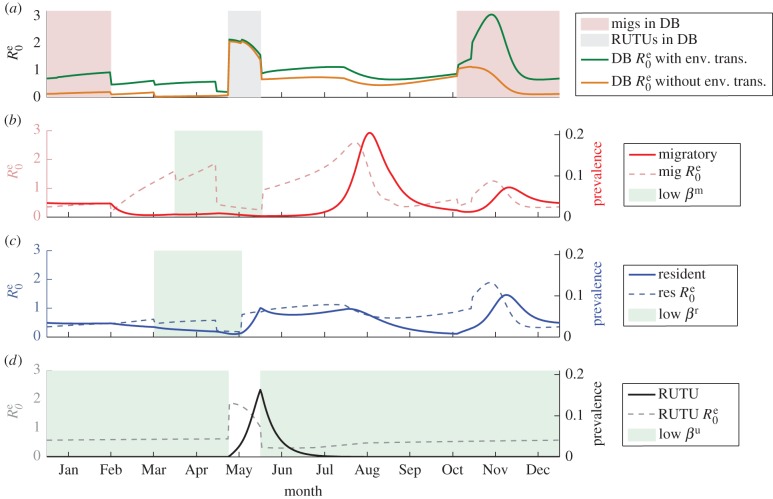Figure 2.
Prevalence curves from the multi-host model against effective R0(t) values [47]. (a) R0e(t) values for species in Delaware Bay both with and without environmental transmission; (b) the migratory duck (mig) prevalence alongside the effective R0(t) for migratory ducks individually; (c) the resident duck (res) prevalence and the effective R0(t) for resident ducks individually; and (d) the ruddy turnstone (RUTU) prevalence with the effective R0(t) for ruddy turnstones individually. In (b)–(d), the times of low transmission for the species shown are shaded and the R0e values are shown with environmental transmission. We assume the population size for each host to be 10 000 [33,39,52]. Initial conditions in the duck hosts are S(0) = 225, I(0) = 1, R(0) = 9774 (robustness to initial conditions is shown in the electronic supplementary material); for the ruddy turnstones they are S(0) = 9999, I(0) = 1, R(0) = 0. We assume that some virus is present initially at Delaware Bay and the duck breeding grounds, with V(0) = 100. We assume no virus is initially present at the ruddy turnstone wintering and breeding grounds [26,50].

